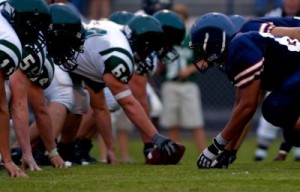The freedom, exhilaration, and endorphin rush of a good run are hard to beat. Even though runners aren’t frequently tackled, runners are hurt almost as often as pro football players.
You may be nursing a running injury yourself at the moment.
Maybe you have had many running injuries.
Why is this so? The answer may be as simple as training. Most runners don’t train properly…or are “weekend warriors” at best.
Running is straightforward and natural so many people don’t think it requires instruction or attention to technique. But running properly is a skill that has to be and can be learned.
Here are a few tips for injury-free running:
Vary your runs. Many running injuries are caused by repeated use of the same part of the body.
- Try trail running. The frequent turns, elevation changes, and uneven terrain force you to alter your stride.
- Vary your pace. Incorporate a variety of paces into your weekly training, from slow recovery runs to maximum intensity sprints.
- Switch up your kicks. When you rotate between shoes, each pair will slightly change your biomechanics which helps reduce repetitive stress.
Start strength training. A variety of strength exercises will correct imbalances and help you get stronger.
If you need to recover, don’t push it. Most runners consider recovery to be a process of ice baths, self-massage and compression socks…that they incorporate after they feel sore. Practice proactive recovery. Adjust your workouts based on how you feel that day. You may need to take a day off, cut your mileage, or slow your pace.
- Know your level of fatigue or pain. Don’t run through sharp, stabbing pain.
- Avoid doing too much, too soon, too fast.
Work on your form. Good running technique is more important than you think. Correcting poor form can be accomplished with just a few small adjustments.
- Count your steps. Ideally you should take more than 170 steps per minute; any slower and you’re putting too much stress on your legs. If you’re taking fewer than 170 steps per minute, focus on taking quicker, shorter steps to increase your cadence.
- Avoid over-striding. Focus on your feet landing underneath your hips…just put your foot down underneath you.
- Don’t slouch. It isn’t good at your computer and it’s terrible for your running form.
Train smart, stay healthy and call Great Lakes Orthopedics for an appointment to discuss your fitness goals and injury prevention!


















